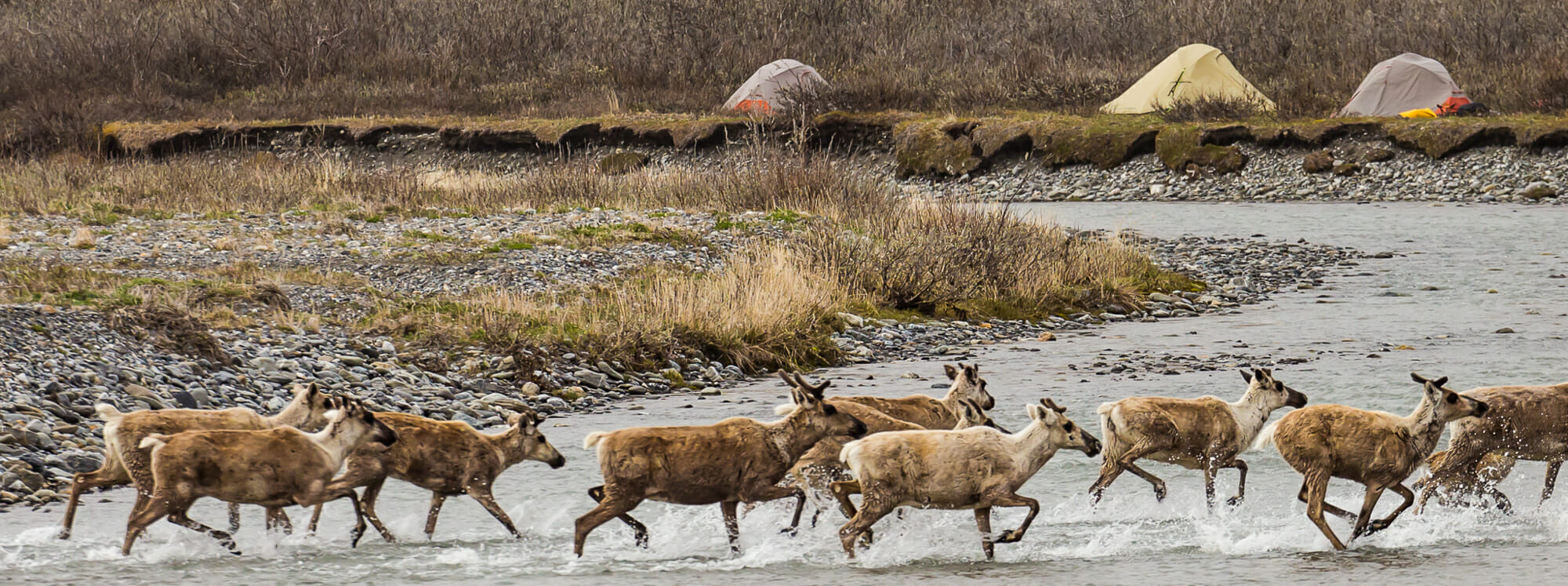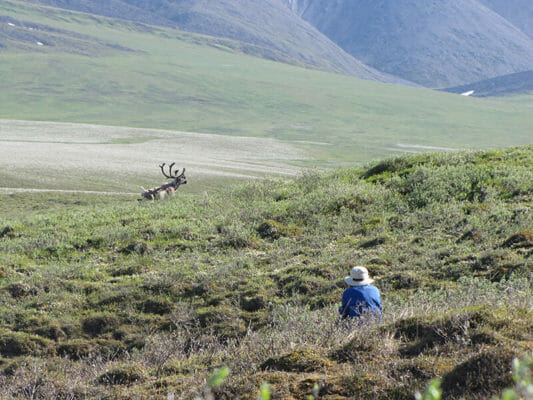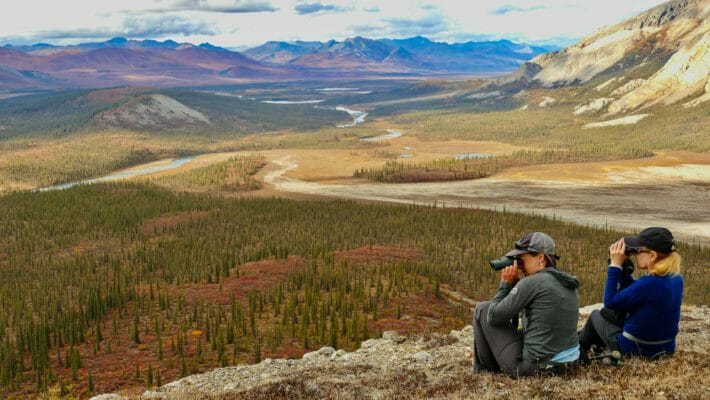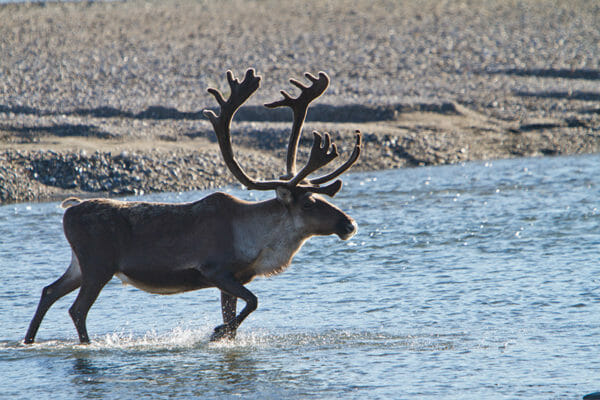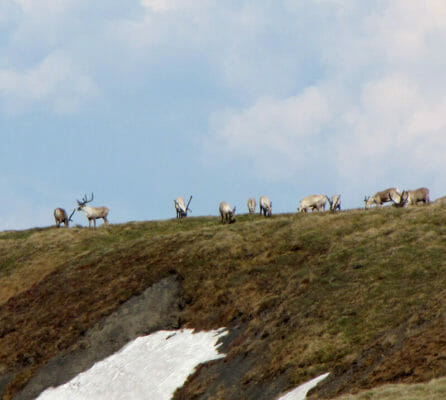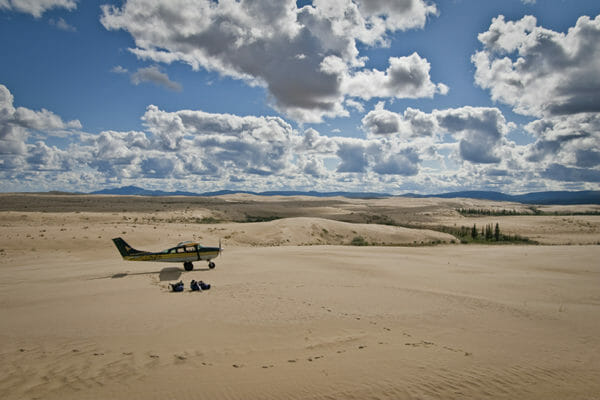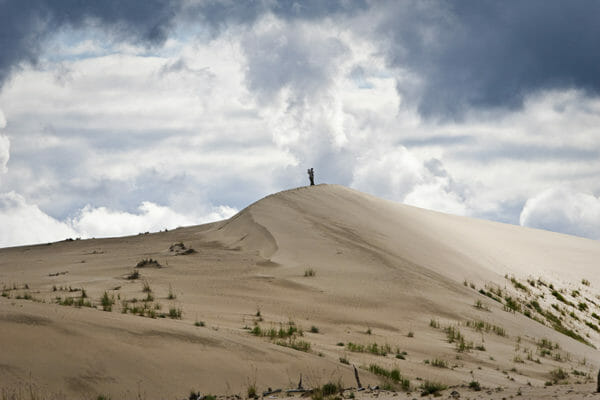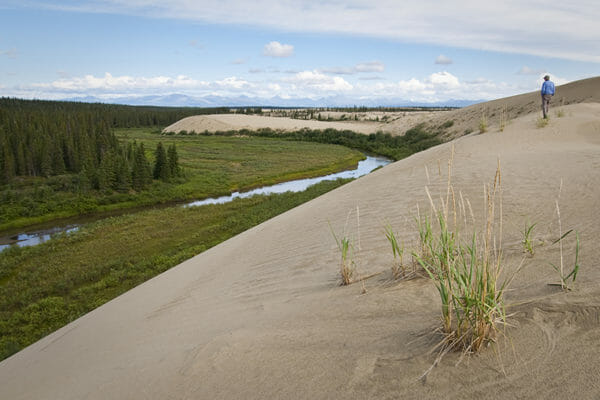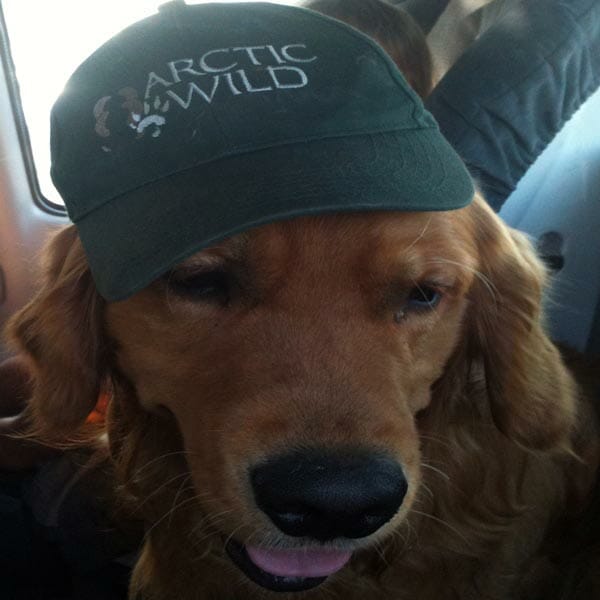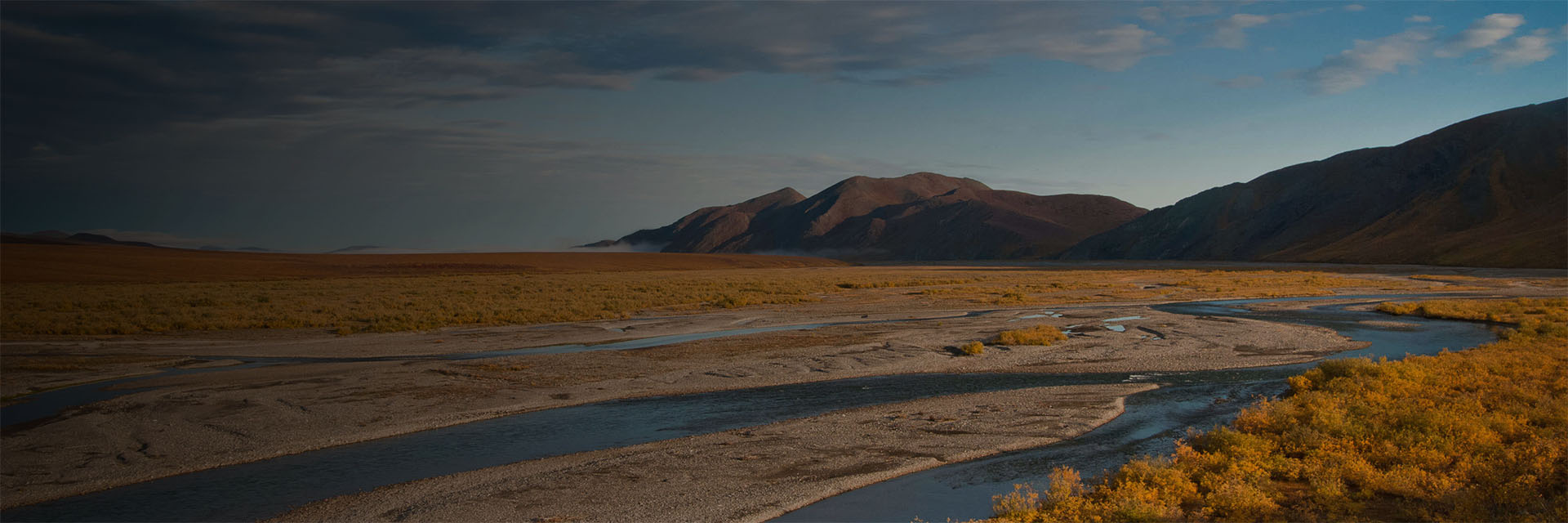Because Arctic Alaska is so vast and the caribou vary their route from year to year, it can be difficult to plan a trip to see this wildlife spectacle. Their movements are affected by snow depth, temperature, insect abundance and wind direction to name just a few factors. But after years of guiding in the Arctic we know a few of their favorite haunts and have had good luck finding them in late June on the tundra of the Western Brooks Range.
Before your arrival we will be gathering information from pilots, biologists and others in the field. On the day your trip begins, together with our bush pilot, we will decide on the best place to set up our base camp. One summer we had 40,000 caribou pass by our camp for three days! Being around that many caribou also means we have an excellent chance of seeing large predators such as wolves, bears and wolverines, even Golden Eagles, soaring overhead looking for caribou calves to eat.
While we never could guarantee that we will hit the big migration, this trip will give you your best shot. The focus of this trip is to see large groups of caribou, but you will also be in one of the most beautiful places on the planet!
The wildflowers will be in full bloom, the hundreds of species of migrating birds will have returned and we hope the mosquitoes will have not yet hatched. It’s a wonderful time to be in the Arctic with or without the caribou.
With 24 hours of daylight and nearly limitless wilderness all around, there is no end to the exploration we can do. Each day we will head off in a different direction seeking wildlife and vistas. How far you choose to hike each day is largely up to you, but the more you can hike, the more wildlife you are likely to see.
There is an old saying in the Arctic which translates into “No one knows the way of the wind or the caribou” which hints at the difficulty of finding caribou. There are certainly no guarantees on a trip like this, but the search is always rewarding no matter the outcome.
Located entirely north of the Arctic Circle, Kobuk Valley National Park is the least visited park in the America. Though nearly totally unknown, the park is full of wildlife and scenic wonders. Kobuk Dunes is like the Sahara but with wolves, moose and cranes. Onion Portage is an archaeological district with evidence of human use for the past 12,000 years! The Kobuk River is a magnificent river rich with wildlife and broad vistas.
On the forth day of our trip we will fly into Kobuk Valley National Park and arrive at the Great Kobuk Sand Dunes, a sea of sand in the arctic wilderness. The dunes were formed during the last ice age as winds tore through the region and deposited sand south of the Kobuk River in an enormous mountain basin.
This is the largest dune complex in arctic North America and it is both fascinating and beautiful. The eastern side of the dunes is more stable and vegetated. There are ponds, wolf dens, and fingers of spruce forest which extend in to the dunes.
On the leeward side, the dunes get larger and larger with sand ridges over 200 feet tall! There are vast areas where a hiker cannot see the edge of the dunes anywhere and one expects to see a camel or caravan until a Sandhill Crane flies by with its prehistoric sounding call, or a moose trots off over the sand. On the west side of the dunes, sand blows off the sand ridges and into the woods and creek. It is easy to visualize how the forest is being swallowed by the advancing dunes.





